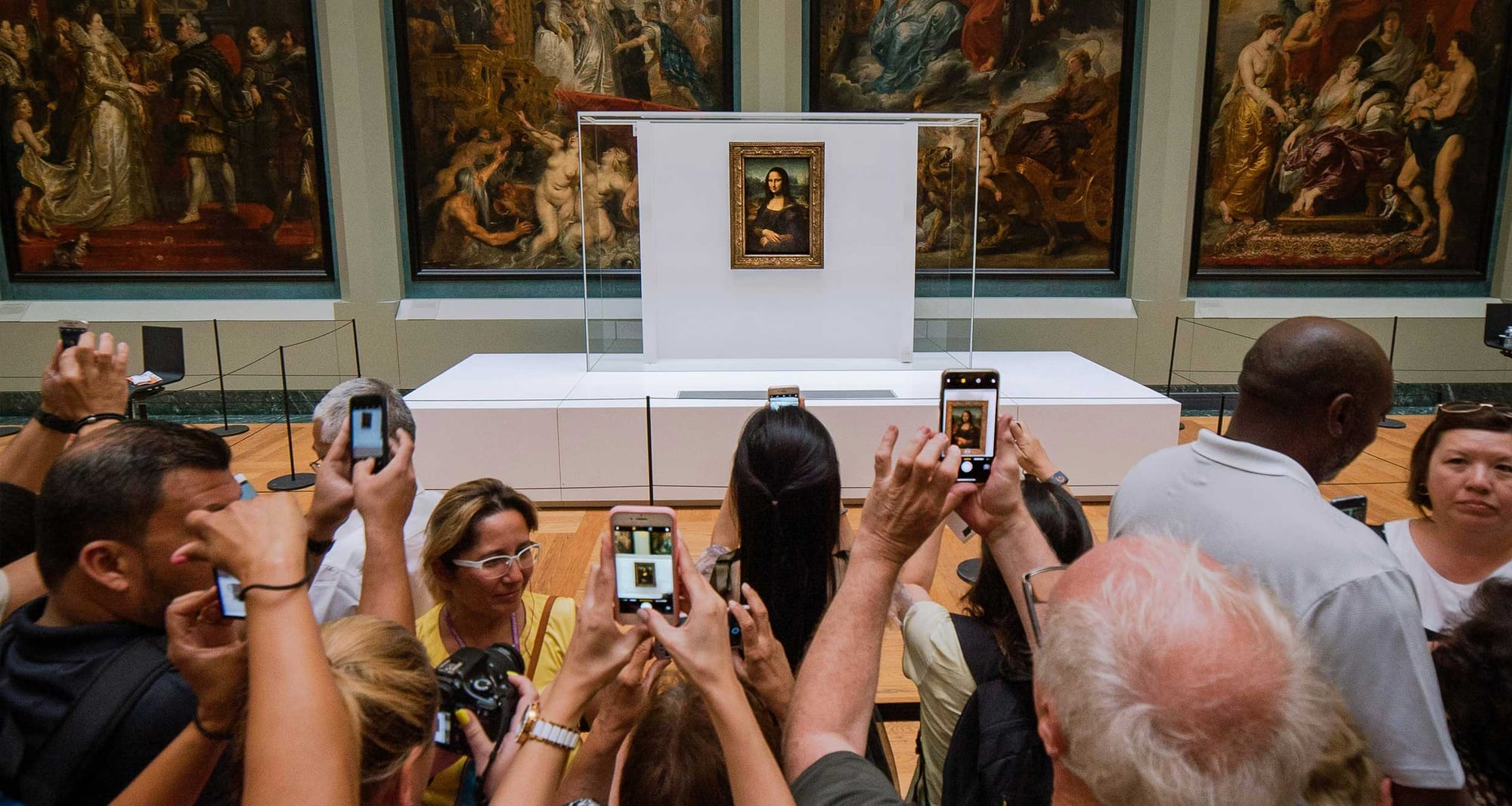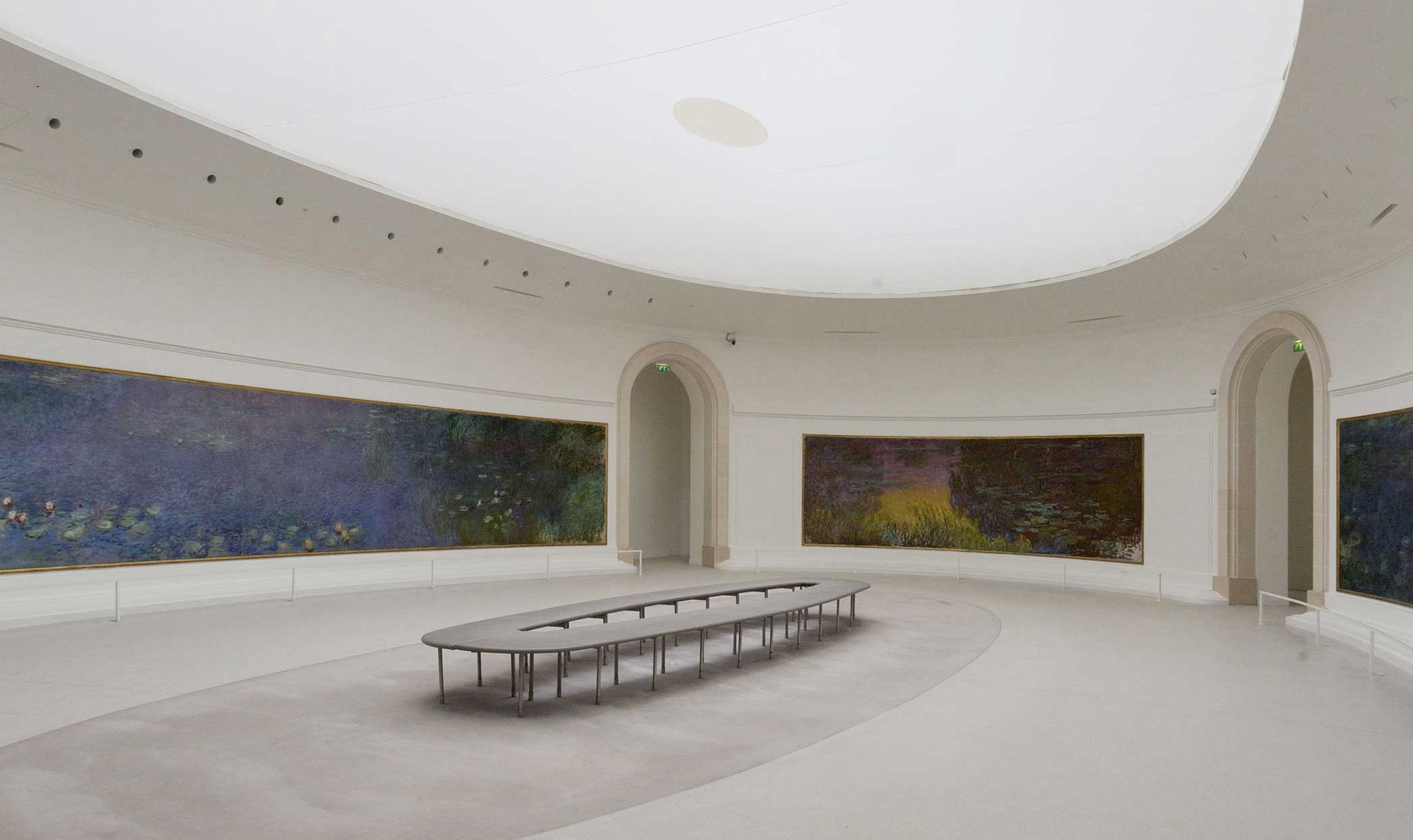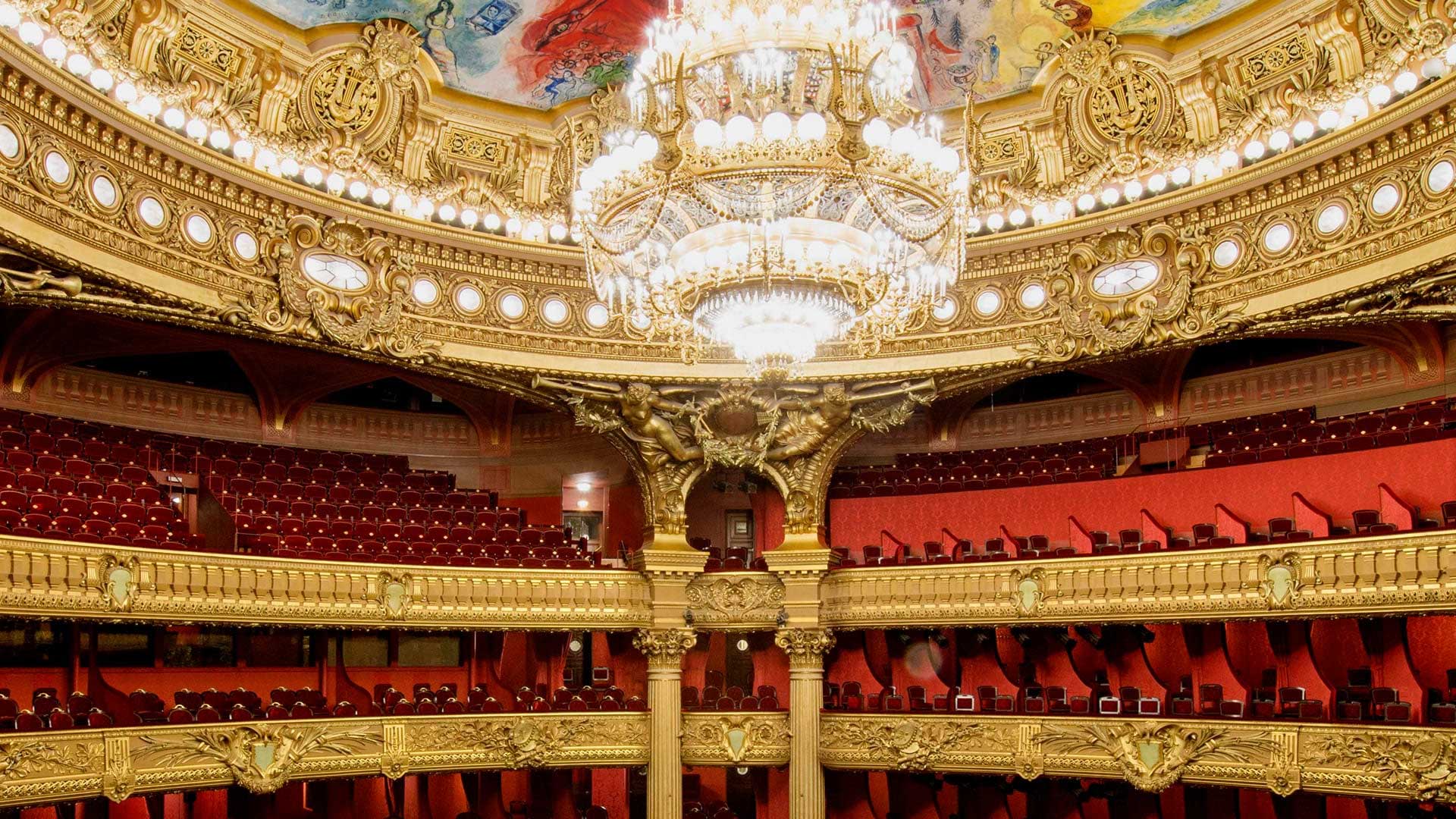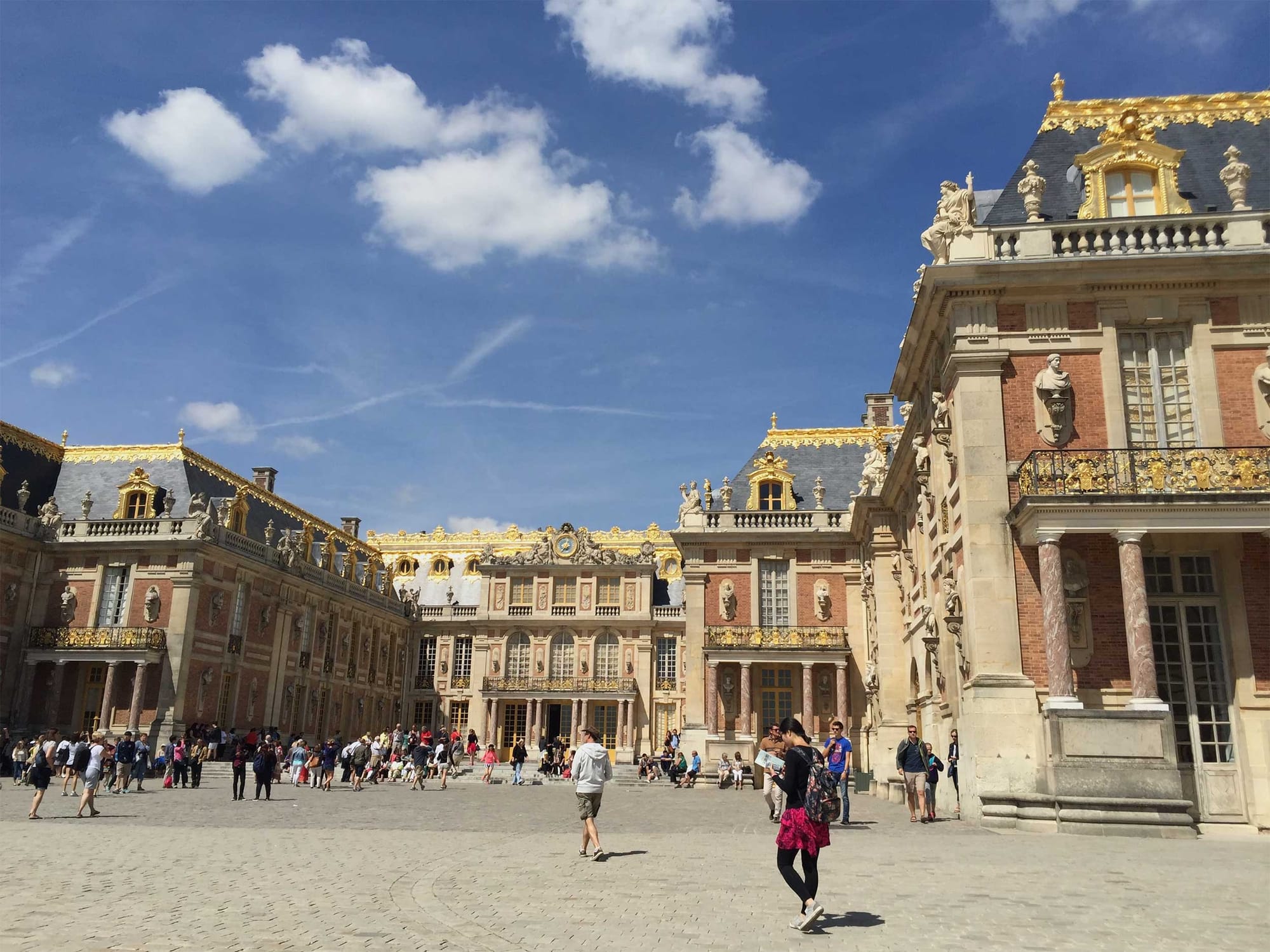
Paris is one of my favorite cities in Europe and, despite what others may say – the city is very accessible. As with every city, there are a few attractions in Paris that offer only limited access (like the Eiffel Tower and Arc de Triomphe), but the majority of attractions are wheelchair accessible. Museums such as the Louvre and Musee d’Orsay offer complete access to the exhibits within. The city’s parks are very friendly to wheelchairs, with paved or gravel paths throughout. Disabled travelers can enjoy a trip to Paris with some advance planning and the information contained in this travel guide. See the information below concerning many of the top sights Paris has to offer:
Eiffel Tower
One of the most recognizable structures in the world, the Eiffel Tower was constructed for the 1889 World’s Fair. Measuring 1,063 feet tall, it remains the tallest piece of the Paris skyline. Since its construction, it has received more than 250 million visitors. There are three levels accessible to the public, but only the first two are open to wheelchair users. The first floor, 187 feet from the ground, features a transparent glass floor and allows visitors a remarkable view of the activity below. This floor is also home to numerous restaurants, an interactive historical display and a video projection show. The second floor, the highest point accessible to wheelchairs, features three souvenir shops, a restaurant, buffet and a beautiful panoramic view of the Paris skyline and the Champs de Mars directly below. An elevator is available to the third floor, but wheelchairs are not permitted due to the emergency exit being a spiral staircase. This policy has been enacted for the safety of visitors.
Admission to the Eiffel Tower’s 1st and 2nd floors is available to adults for €11,00. Disabled visitors are extended a reduced rate of €4,00. If your disability is not clearly visible, you will need to show some proof to receive the discounted rate. Persons accompanying a disabled visitor are also extended the reduced rate. For more information on touring the Eiffel Tower, visit www.toureiffel.paris.
Arc de Triomphe
The Arc de Triomphe de l’Étoile is the Triumphal Arch of the Star and sits at the center of Place de Charles de Gaulle at the Western end of the Champs-Élysées. Construction of the arch started in 1806, designed to honor those who died for France during the French Revolution and the Napoleonic Wars. Following the First World War, France’s Tomb of the Unknown Soldier was placed beneath the Arc de Triomphe’s vault.

The structure stands 164 feet tall and has become one of the city’s most popular sights. Because the arch is located at the center of a roadway/roundabout, tunnels were constructed to allow pedestrians to cross beneath the street. Unfortunately, these tunnels can be accessed only by stairs. Wheelchair users will need to hire a taxi and be dropped off next to the arch. The street is too dangerous to cross on foot or in a wheelchair. If you do venture to the arch itself, a museum is located inside the arch and is accessible via elevator. There are two steps to reach the elevator. A viewing terrace is located atop the arch, but is separated from the museum level by 46 stairs. Wheelchairs are certainly able to get close enough to the Arc de Triomphe to take pictures and view its architectural details. The photo above was taken from the Champs-Élysées during the final stage of the 2015 Tour de France.
Champs-Élysées Avenue
The Champs-Élysées is one of the most visited avenues in Paris. It is 1.9 kilometers (1.2 miles) long and stretches from the Place de la Concorde to Place Charles de Gaulle. The Champs-Élysées is a center for tourists, lined with luxury hotels, shops and restaurants. It is the site of the annual Bastille Day military parade and serves as the finish line of Le Tour de France, the world’s premier cycling competition.


The avenue’s sidewalks are wheelchair accessible, with curb cuts and crosswalks at each intersection. Most of the businesses situated along the avenue can be accessed by wheelchair, but not all offer step-free entry. Many panhandlers set-up on this avenue, but most are in actual need, including the inspirational man I met in July 2015. Still, all visitors to the Champs-Élysées should keep a close eye on their belongings – pick-pockets are always looking for new victims.
The Champs-Élysées is within close proximity to many of the city’s popular tourist attractions. From the center of the avenue: Musee l’Orangerie, 1.6 km; Eiffel Tower, 1.9 km; Musee d’Orsay, 2 km; Opera Garnier, 2 km; and the Louvre Museum, 2.4 km. The Champs-Élysées and the areas surrounding is an excellent, central area for the wheelchair user stay during a trip to Paris. For a listing of businesses along the avenue, visit www.champselysees-paris.com.
Louvre Museum
The Louvre Museum, with its glass pyramid and galleries spread throughout the Louvre Palace, is one of the most recognized attractions in both Paris and the world. Opened in 1793, it is the most visited museum globally. The Louvre attracted 9.7 million people in 2012. Appearing in many movies set in Paris, the Louvre became largely recognizable in the United States after its inclusion in The Da Vinci Code. The museum holds more than 35,000 pieces from around the world, including paintings, sculptures and textiles.


Its most famous piece is Leonardo da Vinci’s Mona Lisa. The museum and its galleries are wheelchair accessible, with elevators throughout. Visitors should prepare to face large crowds, but persons with disabilities can skip these through express lanes. Visitors in wheelchairs are allowed to cut the line to see the Mona Lisa, and are given preferred access directly in front of the painting. No one else can get so close! Admission to the Louvre is € 15,00 for adults, but is provided free to visitors with disabilities and one guest. Wheelchairs are available free of charge from the information desk. Additional information on accessibility at the museum and its collections can be found at www.louvre.fr.
Tuileries Garden
Just beyond the Place de la Concorde, at the eastern end of the Champs-Élysées, sits the Tuileries Garden. The garden was created by Catherine de Medicis in 1564 and became a public park after the French Revolution. It extends from the Place de la Concorde to the Louvre Museum, running a length of approximately 900 meters (~0.5 miles). The garden is home to numerous sculptures, fountains, and amusement rides along its northern border. Several outdoor cafes and ice cream vendors are set-up inside the park. Pathways are either paved or composed of sand/gravel, but are all wheelchair accessible. The garden is flanked by the Louvre, the Musee d’Orsay and the Musee de l’Orangerie, three of the most popular museums in Paris. A walk through the Tuileries is an excellent way to enjoy a nice weather day while taking a break between the art museums.
Musee d’Orsay
Opened in 1986, the Musee d’Orsay is housed inside of the former Gare d’Orsay Railway Station, which was constructed between 1898 and 1900. The museum is an exhibition of French art, primarily from the period 1848-1915. It features works by Degas, Gaugin, Manet, Monet, Renoir and Van Gogh, among others. Works on display include paintings, photography, sculptures and tapestries. The museum’s collection of impressionist and post-impressionist masterpieces is the largest in the world.

The Musee d’Orsay and its galleries are fully accessible to wheelchair users. Elevators and ramps are available to access the different levels. Accessible restroom facilities are available. Because the museum’s collection is so enormous, seeing it all could take an entire day. It is recommended that visitors consult the Musee d’Orsay website before visiting to plan out what you would like to see. A trip to the wheelchair accessible rooftop terrace, on the museum’s 5th floor, provides excellent views of the River Seine, the Tuileries Garden and the Louvre. Admission is € 11,00 for adults. Visitors with disabilities are permitted to enter free of charge, with one guest.
Musee de l’Orangerie
The Musee de l’Orangerie is an art gallery of impressionist and post-impressionist paintings, located on the River Seine in the western corner of the Tuileries Garden. The museum is most recognized for the eight paintings of Water Lilies by Claude Monet, on display in two dedicated galleries.

Monet’s Nymphéas works were first brought to the Orangerie after his death in 1926. While the Water Lilies are certainly the biggest draw, the museum also has the work of other famous artists on display. These include Cezanne, Matisse, Picasso, Renoir and Rousseau, among others. The museum’s galleries are spread across an upper and lower floor, with both being fully wheelchair accessible. Museum staff will open a special door to the left of the main entrance to permit entry for persons in wheelchairs. Admission for adults is € 9,00. Visitors with disabilities are admitted free of charge, in addition to one guest. For more information on accessing the museum, consult the Musee de l’Orangerie website.
Opera Garnier
The Palais Garnier Opera House, constructed between 1861 and 1875, is a 1,979 theatre that was designed and built to host the Paris Opera. It did so until 1989, when the city’s opera moved to the Opera Bastille. Today, the Opera Garnier hosts ballet performances and is open to the public for tours. Its architecture and interior design is immaculate. It is perhaps the most famous opera house in the world, due largely to it being the setting of Gaston Leroux’s novel, The Phantom of the Opera.

Much of the building is wheelchair accessible. Wheelchair users can access the primary opera theatre (pictured here), some of the private boxes, the Library-Museum, and primary halls. Several elevators are available to move between the various floors that are open to the public. Wheelchair accessible restrooms are available on each floor. Admission to the museum is available to adults for € 11,00. Discounted admission of € 7,00 is available to those age 25 or younger. Visitors with disabilities receive complimentary admission, also extended to one guest. For more information, visit the Palais Garnier’s official website.
Notre Dame Cathedral
The Cathedral of Notre-Dame is a Roman Catholic Church and the cathedral seat of the Archdiocese of Paris. It is widely considered to be one of the world’s finest examples of the French Gothic architectural style. Built during the period 1163-1345, it is located on the Ille de la Cite, an island in the middle of the River Seine. While the Church building itself is owned by the French state, rights of its use have been granted to the Roman Catholic Archdiocese, allowing religious services to be held there in perpetuity. The Cathedral is wheelchair accessible.

Wheelchair users are able to access the sanctuary, confessional and Treasury Museum, which contains artifacts from the early Catholic Church in France. Access to the treasury is available by a hidden elevator in the altar. Find a staff member to assist you in operating this lift. The underground Crypt is not wheelchair accessible. While access to the Cathedral is free and open to all, please be cognizant of the fact that many visit not to take pictures, but to worship. Silence mobile phones, speak softly and turn off camera flash. If the Eucharistic Celebration of the Mass is taking place, consider returning at a later time. For more information on visiting the Cathedral, visit its official website.
Love Locks Bridge
The Pont des Arts Bridge, crossing the River Seine, was until recently home to tens of thousands of “Love Locks.” Couples visiting Paris would fasten a padlock to the bridge’s railing, symbolizing their love. They would throw the key to the lock into the river below. Unfortunately, the weight of these locks posed a great danger to the aging bridge, forcing city officials to remove the locks in 2015. Recently, tourists have begun placing locks on other bridges which cross the River Seine. Pictured here is a collection that has recently appeared on the Passerelle Leopold-Sedar-Senghor. This pedestrian bridge connects the Musee d’Orsay with the Tuileries Garden.
Jardon du Luxembourg (Luxembourg Garden)
The Luxembourg Garden was created in 1612 by Marie de’ Medici, the widow of King Henry IV. The garden surrounds the Luxembourg Palace, which is now home to the French Senate. The garden covers more than 50 acres and is open to the public. It is perhaps most famous for the Medici Fountain, built in 1630 and later moved to its present location in 1866. The garden’s pathways are wheelchair accessible. A detailed map of the garden can be found by clicking here (in French). More information on the Palace can be found on the Senate’s website at www.senat.fr.
Sacré-Cœur – Basilica of the Sacred Heart
Built between 1900 and 1914, the Sacré-Cœur Basilica is a Roman Catholic church located at the city’s highest point, atop the Montmartre butte. The Church was designed and built as penance for the “century of moral decline” that French Catholics believed to be responsible for the nation’s losses in the Franco-Prussian War.

Perpetual Adoration of the Blessed Sacrament has occurred inside the Church since 1885. The Eucharist has been held inside a monstrance over the high altar, allowing parishioners and visitors alike to continuously worship the Body and Blood of Jesus Christ. Because this place is considered sacred, visitors are urged to respect worshippers by maintaining a low voice, turning off/silencing cell phones, and not taking pictures inside. During times when the Eucharistic Celebration of the Mass is taking place, consider returning later, so as not to disrupt the service. The church is wheelchair accessible, from the rear. Wheelchairs must enter through a gate at the rear of the church and use an elevator in the parish office to access the sanctuary. While a beautiful view of the city is available from the church’s dome, this space is not wheelchair accessible. Similar views of the city are available from the area at the bottom of the steps (pictured above). It is in this area where the Montmartre Funicular delivers passengers. The path from this point to the rear wheelchair entry is bumpy, with cobblestones. If the gate at the rear is closed, press the call button on the gate and a staff member will open it for you.
Chateau Versailles
The Palace of Versailles has played an important role in the history of France. Construction first began under the reign of King Louis XIII in 1623. At the time, Versailles consisted only of a hunting cabin and range. Louis XIV would later expand Versailles into a palace and moved there from Paris in 1682. Versailles remained an important symbol of the absolute monarchy until October 1789, with the outbreak of the French Revolution. Since the abolition of monarchical rule in France, the French state has owned Versailles. Located 20 kilometers outside of Paris, it has become a major tourist attraction. Visitors can tour the chambers of the King and Queen, the beautiful Hall of Mirrors, and the Gallery of Battles (pictured above). Each of the palace’s rooms are grand in their appointments, and future original artwork which appeared during the reigns of the French kings who resided there.


The palace and its magnificent greens are wheelchair accessible. Visitors to the palace using wheelchairs should enter through Gate H, to the right of the palace’s main gate. There are many cobblestones along this route. Drive slowly and prepare for a bumpy ride. Once inside the palace grounds, walkways are smooth. Admission fees are waived for visitors with disabilities and their one accompanying guest.
Wheelchair users can access the Palace of Versailles by taxi or train. Taxi fares from downtown Paris will typically cost 40,00 to 60,00, depending on time of day and traffic conditions. The Paris RER, line L offers service from the Paris-St. Lazare Train Station to the Versailles-Rive Droite station. Both stations are wheelchair accessible, but wheelchair users will need to request a ramp. This can be done at the station information desks. Rive Droite station is approximately 1.5 km from the palace’s main gate. This is certainly roll-able, but visitors should understand that there is a great deal of distance that can be covered inside of the palace and its gardens. Keep an eye on your wheelchair battery! More information on visiting Versailles is available at www.chateauversailles.fr.
Nearest RER Train line: 1.5 km from Line L at Versailles-Rive Droite station



